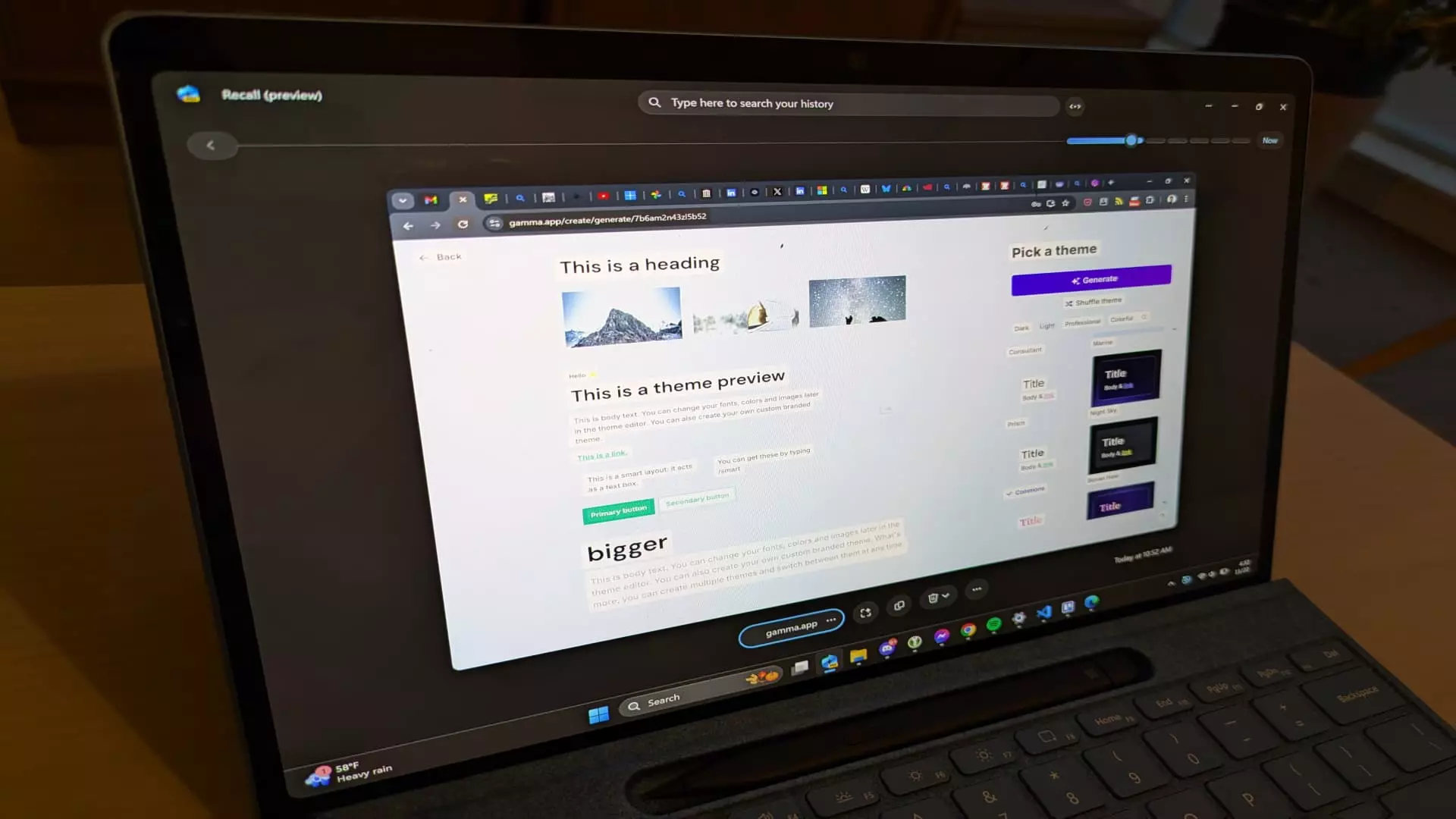Microsoft recently launched Recall, an innovative search tool designed to enhance user experience with its Copilot+ PCs. Marketed as a “photographic memory” feature, Recall aims to capture and archive screenshots of users’ work, allowing them to retrace their steps through a keyword-driven search interface. The technology leverages the power of artificial intelligence to sift through these images, making it ostensibly easier for users to locate specific information. However, early reports suggest that the feature may not yet be living up to its lofty promises.
Initially unveiled in May, Recall was marketed as a cutting-edge addition to the Windows 11 operating system, particularly for devices such as the latest Surface Pro. Yet, the launch has been accompanied by a lengthy development period fraught with challenges. Concerns from cybersecurity professionals about data privacy and security painted a problematic picture for Recall’s implementation. In response to this backlash, Microsoft took significant steps, including encrypting the data and opting to disable the feature by default until users decide to enable it. Though these adjustments demonstrate a commitment to addressing privacy concerns, they also delayed the feature’s launch until late October, leaving many eager users in limbo.
Recall’s compatibility is another thorny issue, as it currently caters exclusively to Copilot+ users equipped with Qualcomm Snapdragon chips and neural processing units. This exclusion leaves a considerable portion of Microsoft’s user base—those with AMD or Intel processors—out in the cold. Moreover, to gain access to this feature, PCs must be part of the Windows Insider Program’s developer channel. While beta testing is a common practice aimed at refining software before a public release, such steep requirements may deter average consumers from engaging with this new functionality.
The primary promise of Recall lies in its supposed utility for users trying to find past information quickly and efficiently. However, initial user experiences reveal that the functionality is not as seamless as anticipated. For instance, the feature’s screenshot capture isn’t continuous, leaving gaps over time during which no images are recorded. This limitation could substantially diminish its effectiveness, especially for users needing an uninterrupted history of their digital activities.
Additionally, while Recall allows users to block certain apps from being captured, compatibility issues have arisen. Some apps do not appear on this exclusion list, leading to unforeseen entries in a user’s history. This inconsistency not only compromises the control users ought to possess over their data but also raises further questions about the reliability of the tool.
While it’s designed to streamline searches through captured content, the search function of Recall displays significant shortcomings. Keywords entered do not reliably yield accurate results, as numerous examples demonstrate. For instance, when users searched for “Yankees,” only partial matches were displayed, while other keywords yielded no results despite clear visual representations within screenshots. A fast search speed does little to alleviate the frustration stemming from poor accuracy.
Moreover, users have experienced delays when navigating through the saved screenshots, suggesting that while the interface is responsive, backend processing may still require optimization. The promise of clicking back to a specific moment in time is enticing, but the overall experience raises questions about how genuinely useful this feature may be in everyday applications if users cannot trust the results.
Recall is an ambitious attempt by Microsoft to redefine how users interact with their past digital moments. Despite its potential to be a helpful tool, its current limitations regarding functionality, privacy, and search accuracy present hindrances that need addressing before it can be deemed a success. As testing continues, one must remain hopeful that Microsoft will refine Recall to overcome the initial shortcomings and fully realize the vision of a powerful, AI-driven search tool. Until then, users must weigh the feature’s current offerings against their expectations and needs, which may vary significantly based on individual use cases.


Leave a Reply
You must be logged in to post a comment.